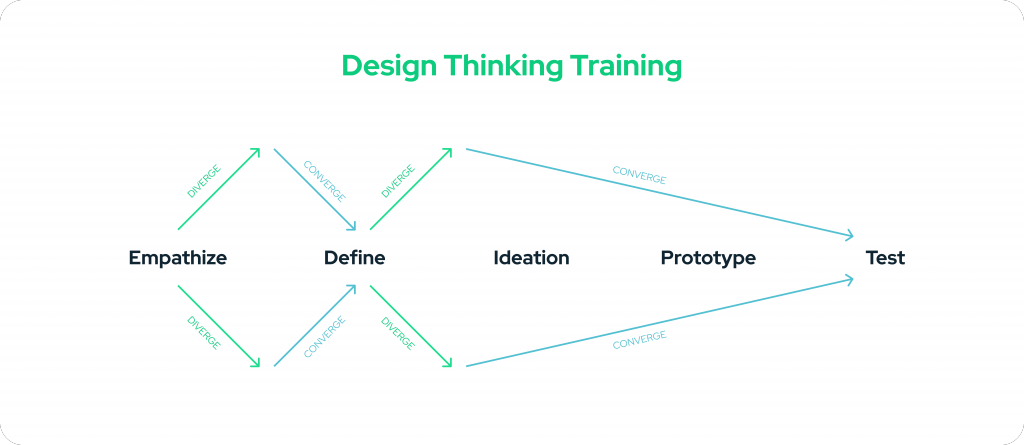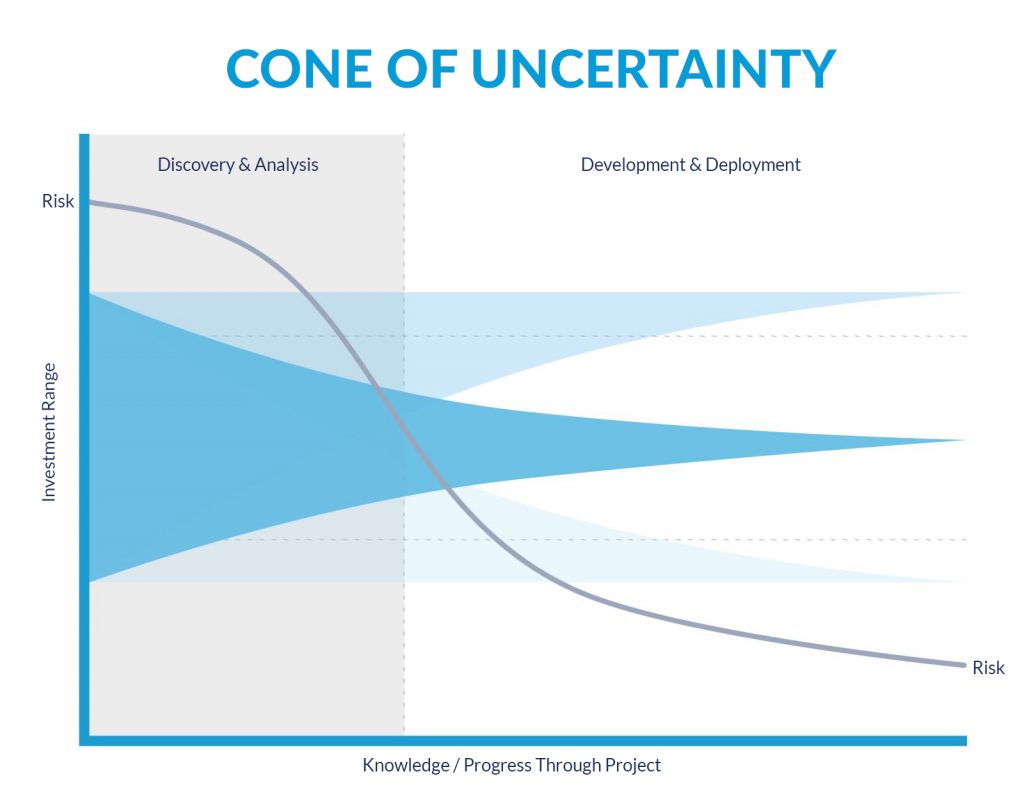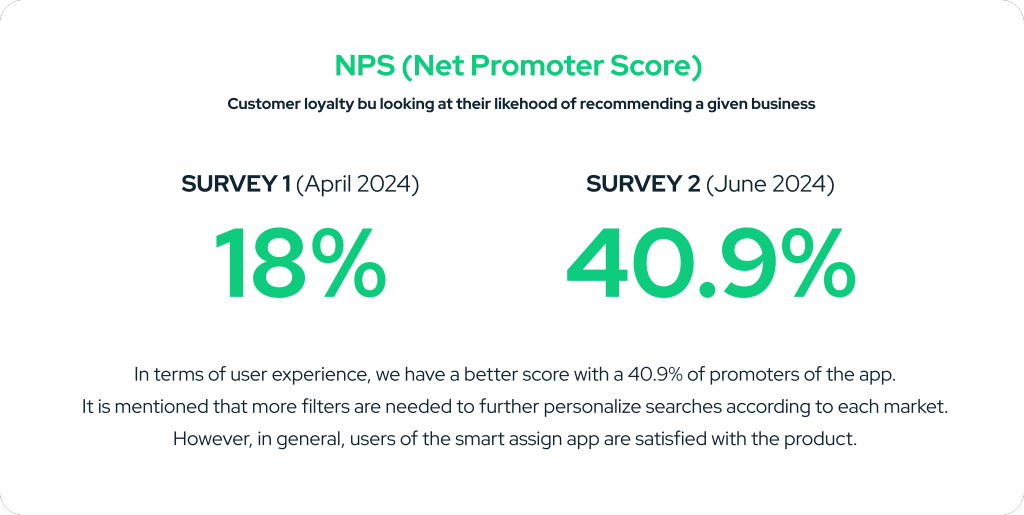Stepping Outside the Box: Unlocking Innovation with Design Thinking
One of the keys to excellence in a hyper-competitive environment is alternative thinking. This is true for the development of products and services, and for crafting successful business strategies as a whole. It’s proven that sectors with high proportions of innovative companies outperform other industries on economic profit and revenue growth.
Building a dynamic, ever-evolving company claims an innovative mindset that faces challenges with originality and brings new and more effective solutions to awe users, raise engagement, and boost market attractiveness.
In this sense, Design Thinking emerges as a transformative approach to innovation that can solve complex business problems by leveraging the possibilities of technology, the benefits of a neat user experience, and the ability to respond in an agile way in dynamic markets. How is this framework able to enhance ROI and forge leading tech organizations? Here’s a walk through the power of Design Thinking for business value creation.
The Design Thinking Ethos: Stages & Core Principles
The quantum leap of Design Thinking as a process to solve problems is non-linearity. Its iterative nature allows it to reframe issues with an adaptive and flexible nature. There are a lot of Design Thinking models out there, but one of the most acclaimed is the one proposed by the Hasso-Plattner Institute of Design at Stanford:

In this model, there are six stages that can be resumed as follows:
- Understand: the team explores the question behind the problem that needs solving. The main goal is to gather assumptions and data points from different stakeholders to build a backlog of collective knowledge from the issue to tackle.
- Observe: qualitative research is conducted through workshops, interviews, surveys, and other feedback-collection activities to learn more about the context, expectations, and actual experiences of potential users and interested parties.
These two stages tend to be clustered into one: Empathize. Empathy is one of the core principles of Design Thinking – as problems are inherently human, practicing active listening and trying to truly understand people’s motivations and needs is vital to finding effective solutions.
- Define: the collected information is analyzed with a biased-free mentality to define the actual problem. Many times, the process starts with a bookmarked pain point that, after this phase, is revisited and transformed.
- Ideate: at this stage, the team proposes several new ideas to address the challenge by unleashing expansive thinking (a.k.a. brainstorming), another important principle of Design Thinking.
- Prototype: the most promising solutions are turned into tangible scaled-down versions to be tried out, fast. Experimentation is the third big principle -along with empathy and expansive thinking- and it allows us to see ideas in action rapidly and cost-effectively.
- Test: core functions are tested with relevant potential users to prove technical feasibility and intuitive usability. As mentioned before, as Design Thinking goes in interactive cycles, this stage can bring discoveries to keep digging deeper and making the final result richer.
How Design Thinking Drives Business Value: 4 Key Benefits
Besides bringing to life useful and resonating products, this methodology – to be accurate, this work mindset focused on how designers think– provides a lot of benefits that reflect on increased business performance and revenue.
Without going further, according to research from McKinsey, top design-performing companies achieved significantly faster revenue growth (32 percentage points higher) and total returns to shareholders (56 percentage points higher) compared to their industry peers over five years. Here are some reasons why.
Without going further, according to research from McKinsey, top design-performing companies achieved significantly faster revenue growth (32 percentage points higher) and total returns to shareholders (56 percentage points higher) compared to their industry peers over five years. Here are some reasons why.
Improved Understanding of Users = Increased Loyalty
As Design Thinking emphasizes empathy, it provides a comprehensive vision of users’ needs, goals, and pain points. This way, it helps companies create products and services better tailored to specific targets, optimizing conversion and, even better, increasing loyalty. In regards to the latest goal, it is proven that 80 percent of the value creation achieved by the world’s most successful companies comes from extracting new revenues from existing customers.
Fast Analysis = De-Risked Development
Going deeper into qualitative and quantitative analysis, redefining assumed problems and rapidly testing potential solutions are all exercises that lead toward optimized customer experience and business value. The more you iterate on this cycle, the bigger the chances to choose the best-performing solutions.
In this sense, when looking at the so-called “cone of uncertainty” where the stakes are high at the beginning but costs remain relatively low, moving with agility assures lower risks at the development and deployment phases.

Iterative Process = Resource Cutdown
Another advantage of Design Thinking is the fact that it brings together different professional profiles into the mix. The message is clear: this isn’t a “only designers” endeavor. All the way around: design is approached by other areas – including C-level management- as a priority.
Organizations where design is not siloed and business leaders are committed to better understanding users are proven to have the best financial returns and better business performance.
Case Study: Making Sense’s Design Blueprint to Profitable Products
At Making Sense we have vast experience implementing Design Thinking to provide innovative and commercially successful solutions for our clients. Here’s a summary of one distinct implementation case.
- The Challenge
One of the US’s top players in deposition and legal support services needed a solution to digitize the process of scheduling and assigning jobs to 2200+ vendors (interpreters, digital reporters, videographers, and transcribers), with the goal of replacing the inefficient, time-consuming workflow of 40+ managers that worked offline, in a decentralized manner, from different parts of the United States.
- The Solution
We built a scalable, centralized, and accessible-to-all platform for managers to perform their tasks without the need for manual work or the cognitive effort of remembering by heart the data related to availability, skills, and scope of work of all vendors. The solution enabled the company to handle more cases, unify acquisitions, and make faster, more informed decisions.
- Applying Design Thinking
Design Thinking played a key role. It was the first time the client worked with this methodology, so we acted as strategic partners to guide them through the process. We listened to their pain points actively, leaving assumptions behind, and proceeded with all stages previously described. In the end, we proposed new ideas to tackle the issue of bringing to life the singular source of truth for data they needed.
- The results
From a management perspective, the platform helped to reduce the learning curve for new users, bringing transparency into current work progress on assignment and pre-assignment, while minimizing accidental assignment (where reporter skills/etc. don’t match the job requirements).
In terms of UX, we delivered a streamlined experience, which had a great impact on the business. In just two months, we achieve a better NPS score with more than 40% of promoters of the app.

Finally, our partnership drove growth, increasing 25+ millions on top of the existing enterprise value, while operations received a 40% boost in operational efficiency.
Unlock Your Company’s Growth with Design Thinking
Are you ready to embrace the power of Design Thinking for enhanced value creation and long-term growth in your company? Get in touch!
